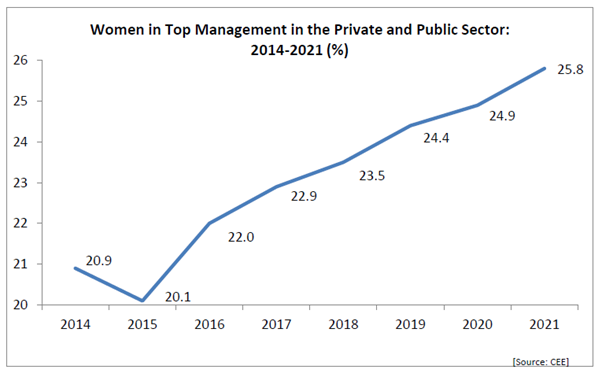On the sport scene
At the time of the release of the WOW report on Women in business – August 2022, the female national soccer team, Banyana Banyana, had just qualified for the 2022 Women’s Africa Cup of Nations and further afield in the US, the National Collegiate Athletic Association (NCAA) reported an improvement in female athletes’ earnings. Female athletes, who have long been relegated from conventional media, are now able to bypass the mainstream sports media and amplify their voices and connect directly with the public via social media.
History of women in business
If we reflect back on the role of women in business, it is recorded that throughout the 18thcentury, there were businesswomen who traded in major cities of the world. Mary Katherine Goddard was the first woman publisher in America in 1766, Madam CJ Walker owned a million-dollar hair care business in 1890 and Coco-Chanel opened her first boutique in 1913.
Yet by 1973, there was only one female CEO of a Fortune 500 company, Katherine Graham. This number however increased to 37 in 2019. Progress in recent times
Status of South African women in business
It is heart-warming to note the progress made in South Africa, where near parity with men has been achieved in parliament, politics and the judiciary, and the country was ranked 18th out of 156 countries in the World Economic Forum’s 2021 Global Gender gap Index. However, in many parts of the world, women are still significantly underrepresented in business and continue to earn less than their male counterparts and populate lower-paying jobs. According to the WOW report, The World Bank in its Women, Business and the Law 2022 report ranked South Africa 49 out of 190 countries, the highest in Africa, behind only Mauritius, for the least-discriminatory legislation.
The underrepresentation of women still happens on the back of the Sustainable Development Agenda, adopted by UN member states in 2015, having set a 2030 deadline for the achievement of gender equality and the empowerment of all women and girls. Today, with under 10 years left to meet it, the world is not on track. Progress on gender equality has not only failed to move forward but has begun to reverse. The empowerment of women has been on the agenda of many organisations and governments, not only because it is the right thing to do, but because it has been proven that women are one of the most powerful investments to be made to build better societies and thus, a better future.
It is encouraging to see the good performance on gender parity coming out of South Africa given the fact that the country ranked at the bottom of the list on a number of indicators such as the quality of education, gender based violence, equality and so on.
According to Stats SA, women made up 44.7% of the economically-active population in Q3 2021, down from 46.3% in Q3 2013. Despite many challenges, including access to finance and land, the increased focus globally by shareholders on environmental, social and governance (ESG) has led to the growing demand for female executives, gender parity in pay and funding of female entrepreneurs. In the private and public sectors, the share of women in top management increased to 25.8% in 2021, from 24.9% in 2020 and 24.4% in 2019, according to the Commission for Employment Equity’s 2021/22 report.
Importance of appointing women in leadership positions
We have heard many times before that: “When women are empowered and can claim their rights and access to land, leadership, opportunities and choices, economies grow, food security is enhanced and prospects are improved for current and future generations”, as expressed by Michelle Bachelet, the former under-secretary-general and executive director of UN Women.
Opportunity International reported that statistically, investing in programmes improving income-generating activities for women can return US$7 for every dollar spent. In a 2013 study in Ghana, the gender wage gap shrunk from 57% for women with no education to 16% for women with secondary school education.
These are green shoots, as politicians and farmers would say, that need nurturing as they can produce much-needed stability and sustain progress in society.
Women’s representation in the public and private sectors of South Africa improved steadily and substantially over the years as the graph below indicates.

Women in private sector leadership
The private sector is, however lagging behind state-owned entities. In 2021, women made up 37% of SOE leadership positions, against 24.6% in the private sector, according to the Commission for Employment Equity.
The encouraging trend is that there are an increasing number of women being represented in industries that were dominated by men such as engineering, ICT, water supply, sewerage, waste management, mining and other technical roles.
This is a great achievement given that the role of women leaders in South Africa only got recognition in the last few decades the reason being that the country’s society was conventionally patriarchal with history records only focusing on the achievements of men.
South Africa shines in this contemporary equality effort. It must be hoped South Africa keeps a leadership position in this race.
*All credit for this article below goes to the initial authors and the link to the original article can be found here:




